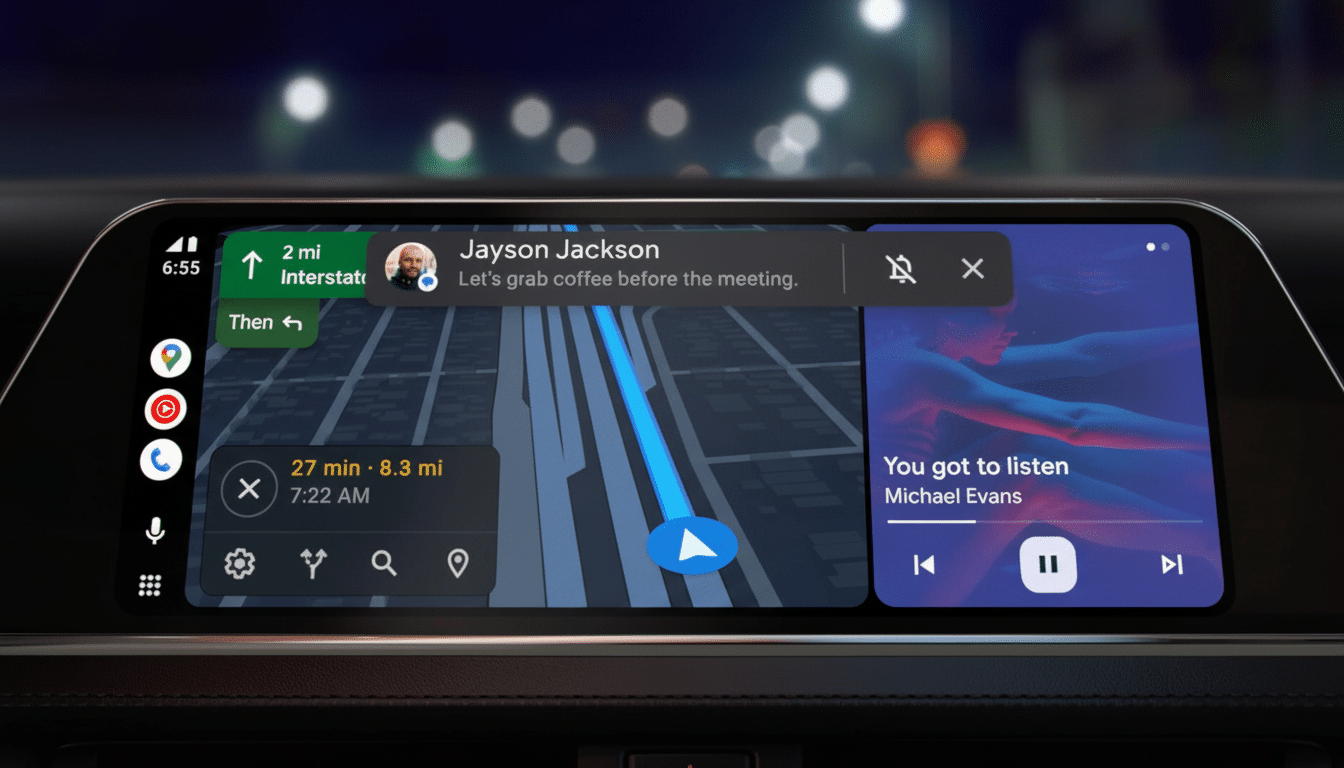Google is taking its generative AI assistant to the car, with Gemini now available worldwide on Android Auto. The change essentially replaces Google Assistant with Gemini in cars where drivers have already switched to Gemini on their Android phones, part of Google’s overall push toward a single AI across devices.
Android Auto displays apps and services from a phone on the car’s screen and is embedded in millions of cars. With Gemini at the wheel, Google says new assistant functions will be able to conduct more fluid, ping‑pong‑style conversations that accommodate multi‑step commands while avoiding some of the robotic phrasing that characterized earlier assistants.

What Gemini adds to the dashboard in Android Auto
Route‑aware search gets a big upgrade. Rather than peck through maps and menus to find a place to eat, drivers can ask open‑ended questions like where they can get a certain cuisine that’s open now, along their route or near where they’re going. Gemini can then present richer context — such as top menu items or whether a place is kid‑ or dog‑friendly, and other information usually buried in business listings — before you navigate.
Gemini also allows open discussion in the car. Saying a prompt like “Let’s chat” will start a lightweight companion mode that takes you through brainstorming, learning about a place you’re visiting, or spinning up an itinerary. Google shares that these interactions are intended to be voice‑first and glanceable — something in line with Android Auto safety practices, which encourage people to keep their hands on the wheel and eyes on the road.
Smarter messaging and productivity while driving
Communication features receive more than a polish. Gemini can skim over lengthy text threads, write replies in your voice, and provide up‑to‑the‑minute ETAs in a message without jumping back and forth between apps. It can even translate incoming or outgoing messages on demand, a handy addition for when you’re traveling and want to have cross‑language conversations.
Gmail integration is more than just showing unread counts. Drivers can ask Gemini to extract a hotel address from email and start up navigation immediately, or request a rapid survey of unread messages so they know what matters now versus later. The aim is to reduce the number of taps you make and time spent looking at your screen doing basic stuff.
Music and navigation integrations for hands-free use
On the entertainment side, Gemini can follow a mood or family‑friendly filter on playlists based on such factors as length, and it works with services such as YouTube Music and Spotify. As Android Auto requests directions, you or a passenger can sift through the soundtrack or request new destinations without disturbing your attention on the road.

Especially for mid‑drive detours and micro‑tasks, prior research conducted by the AAA Foundation for Traffic Safety indicates they can be distracting when interfaces compel visual or manual operations. Voice‑centric flows are a way to minimize screen input, but AAA says cognitive load still counts, so that’s why clear prompts and precise language matter.
Availability and how to activate Gemini on Android Auto
Android Auto’s version of Gemini is rolling out in 45 languages worldwide. To use it, users have to have the Gemini app installed on their Android phone and must choose Gemini as their assistant. When active, a tooltip is displayed on the in‑car monitor. Drivers can say “Hey Google” and then use the on‑screen mic or long‑press the steering‑wheel voice button to begin a request.
Like with all Android Auto updates, availability will vary based on location, carrier, and app support. Keeping Android Auto, Google Play services, and the Gemini app updated will help guarantee that the new experience appears once it touches down on your device.
The bigger picture for AI assistants in the car
This rollout is part of a broader move by Google to unify its assistant experience in phones, wearables, and cars under Gemini. It also ratchets up competition with in‑car ecosystems. Apple is iterating on Siri with the new version of CarPlay, Amazon still promotes its Alexa integrations, and companies like Mercedes‑Benz have fiddled with large language models in their own assistants. The fight is moving beyond voice command lists to conversational copilots who know context, preferences, and intent.
Look to continued refinement around safety and privacy. Android Auto already restricts some interactions when you’re driving, and Google has put a focus on privacy controls and use of on‑device AI for certain tasks on compatible phones. For drivers, the idea is simple enough: fewer barriers to getting actions done and more helpful assistance, all delivered in a natural‑sounding “conversation,” without distracting people from their focus on the road.

